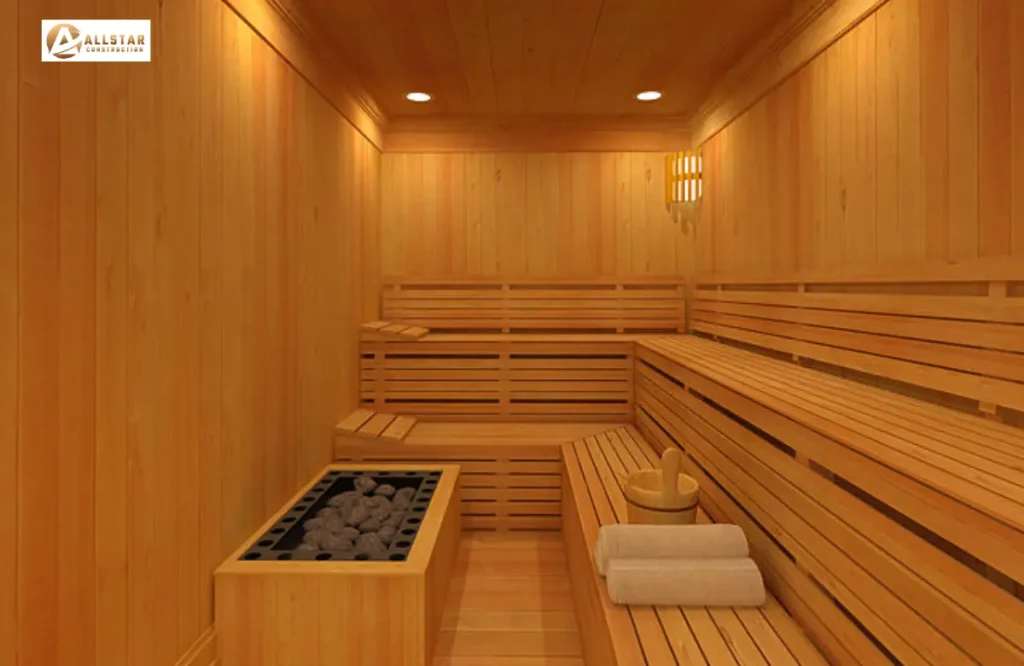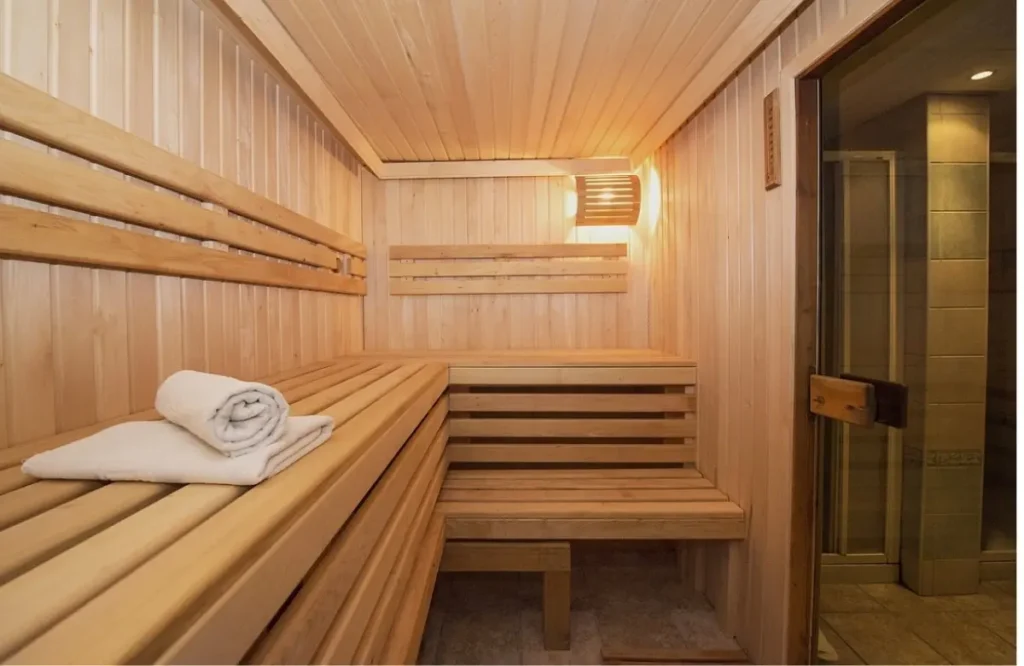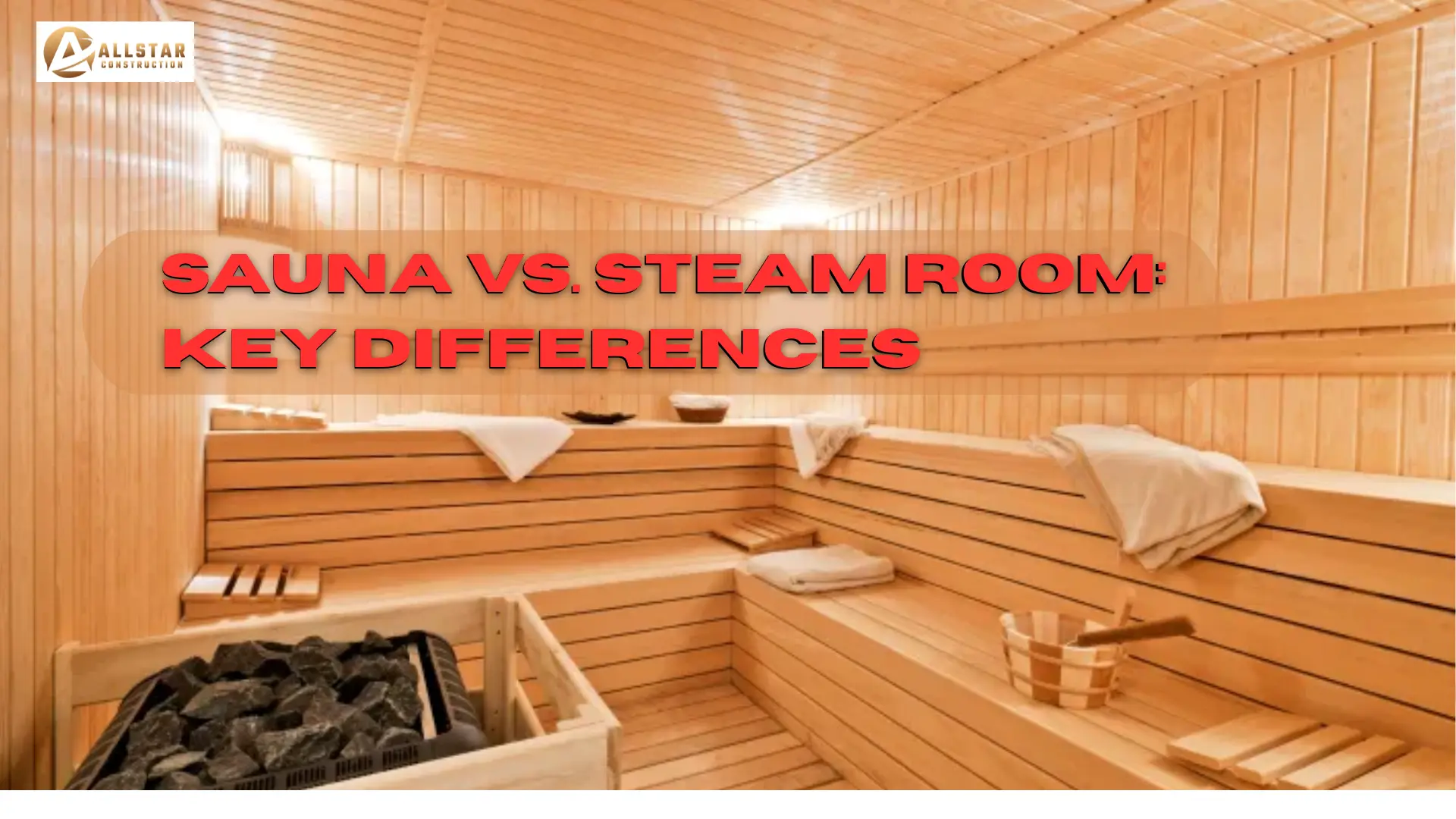Saunas and steam rooms have become favorite choices of relaxation and healing with heat treatment. The two look alike, but they are very different in terms of the experience they give, considering their selection of heat and humidity. The saunas are hot and dry with high temperatures, whereas and the steam rooms are moist with low temperatures. Having these differences in mind can enable you to determine which one fits best in line with your wellness objectives, be it deep muscle relaxation, respiratory relief, or hydrating your skin. This article examines the major differences between saunas and steam rooms to make the right selection.
What Is a Sauna?
A sauna is a small compartment or cabin employed to deliver dry heat treatment. Conventional saunas are usually hot, 150°F to 195°F, with a low humidity, typically under 5 to 30 percent. Individuals come to rest in saunas, sweat, and generally feel better through the impact of the heat on circulation, muscle relaxation, and stress relief.
Pros:
- Promotes muscle relaxation and decreases tension.
- Promotes heart disease by enhancing cardiac rhythm and perfusion.
- Promotes sweating of the body to release all the toxins.
- Reduces stress and enhances well-being.
- May relieve pain in joints and other musculoskeletal pain.
Cons:
- High temperatures make some people uncomfortable or unsafe.
- If we do not drink enough water we can get dehydrated.
- Not suitable without medical advice in individuals with some heart or breathing disorders.
- It should be well-maintained to avoid the growth of mould or bacteria.
What Is a Steam Room?
A steam room is a humid environment containing a lot of heat or steam and is usually located in a confined area, with a heated air temperature of between 110°F and 120°F with 100% humidity. The warm effect of the steam relaxed the pores, enhanced the hydration of the skin, and calmed the airways.
Pros:
- Great skin moisturizer and cleaner.
- Alleviates congestion and respiratory symptoms.
- Relaxes and soothes muscles with moisture.
- It can help to enhance circulation.
- Helpful in reducing stiffness and pain in joints and muscles.
Cons:
- High humidity can be too intense or uncomfortable.
- Not compatible with asthmatic or respiratory illnesses unless advised by a physician.
- Humid conditions should be deeply cleaned up, or mold and mildew will appear.
- Extremely hot humidity led to recommended shorter session times.

Key Differences Between a Sauna and a Steam Room
Saunas and steam rooms are essentially alike as they both offer heat therapy. However, each one has much more to offer in the way it delivers heat as well as its surrounding atmosphere and the impact it has on your body. The following are the major differences that can guide you on the kind of option that is more favorable in line with your needs to be healthier and to relax.
Heat Type and Humidity
- Sauna: Dry heat in saunas and has low humidity (5 to 30 percent). Temperatures are between 150°F and 195°F. Dry air stimulates sweating and promotes quick evaporation of sweat, thus cooling the body.
- Steam Room: Steam rooms offer moist heat at full humidity, but at a lower temperature, typically between 110°F and 120°F. The damp air remains steamier and heavier, covering the skin with warm moisture, unable to evaporate sweat.
Temperature Experience
- Sauna: There is a strong sense of dry heat in a sauna as it becomes quite hot. This assists in elevating body temperature.
- Steam Room: The heat is reduced but moisture sensations are strong and suspended on the skin and respiratory system.
Construction Materials
- Sauna: Saunas were constructed mostly of wood, including cedar, pine, or spruce. Wood is highly moisture-absorbent; it keeps the climate dry, which is favorable for withstanding extreme heat.
- Steam Room: This involved non-porous material such as tile, glass or acrylic to hold this moisture and avoid damage due to the humidity all the time.
Health Benefits
- Sauna: Assists the body with cardiovascular, muscular relaxation, and heavy sweating to clear.
- Steam Room: This is especially effective over the respiratory system and hydrating the skin and relieving the aches and pains of frozen joints and ganking muscles with Moist Gloss.
Comfort and Time of Length of the session.
- Sauna: It is typically shorter because of the intense heat and the duration usually lasts 10-20 minutes.
- Steam Room: Sessions can be longer, approximately 15-30 minutes, as the low temperature is less stimulating.
Summary Table of Key Differences
| Feature | Sauna | Steam Room |
| Heat Type | Dry heat | Moist heat (steam) |
| Humidity Level | Low (5-30%) | High (100%) |
| Temperature Range | 150°F to 195°F | 110°F to 120°F |
| Construction Materials | Wood | Tile, glass, acrylic |
| Main Benefits | Detox, circulation, relaxation | Respiratory relief, hydration |
| Session Length | 10-20 minutes | 15-30 minutes |
Which One Should You Choose?
The choice between a sauna and a steam room has to do with your preferences, health objectives and in what manner you want to undergo this heat therapy.
A sauna may take place as a preferable option in case of enjoyment of dry heat conditions and also achieving complete muscle relaxation, cardiovascular advantages and deep sweating to achieve detoxification. Light, less humid, cool environments are also perfect in saunas, and you can have a similar natural wood atmosphere.
Alternatively, a steam room may suit you if you feel more relaxed in moist heat, and you need breathing relief, better skin hydration, and some comfort when muscles or joints feel tight. Steam rooms are also effective for individuals with asthma or allergies in respiratory illnesses, as the warm, damp air of steam rooms aids in opening airways.
Keep in mind also your heat and humidity: the saunas are typically hot with low humidity, but the steam rooms are colder and 100 percent humid, which some people may find more irritating or challenging to breathe in.

Conclusion
A Sauna or a steam is a matter of choice, depending on your health objectives and comfort. They both offer a way of relaxing and heating, but each has distinctive advantages. A sauna offers a drying, intense heat, which is used in cleaning the muscles and the heart, whereas a steam room offers a humid heat, which cleans the breathing system and moisturizes the skin. Regardless of the choice you make, it is important that you have the installation and maintenance done professionally to ensure that you have a safe and enjoyable experience. At All Star Construction Group, we will design and construct custom saunas and steam rooms designed to suit your lifestyle and space. Get in touch with us to plan your ideal wellness retreat either at home or at your business.
FAQs
A sauna applies dry low-humidity heat, whereas a steam room applies moist 100% humidity heat.
Both are useful, though the penetration of heat is deeper in saunas, which has the possibility of eliminating muscle tension more effectively.
Yes, steam rooms are humid, making the skin moist and keeping it clean.
Steam rooms are better for the respiratory system; consult a doctor if you have chronic ailments.
Sauna sessions generally last 10-20 minutes; steam rooms up to 15-30 minutes.
They both can be safe when taken right, be hydrated, and should not be exposed too long.
Yes, many homes have both. One of them can be designed and constructed to fit your space.


